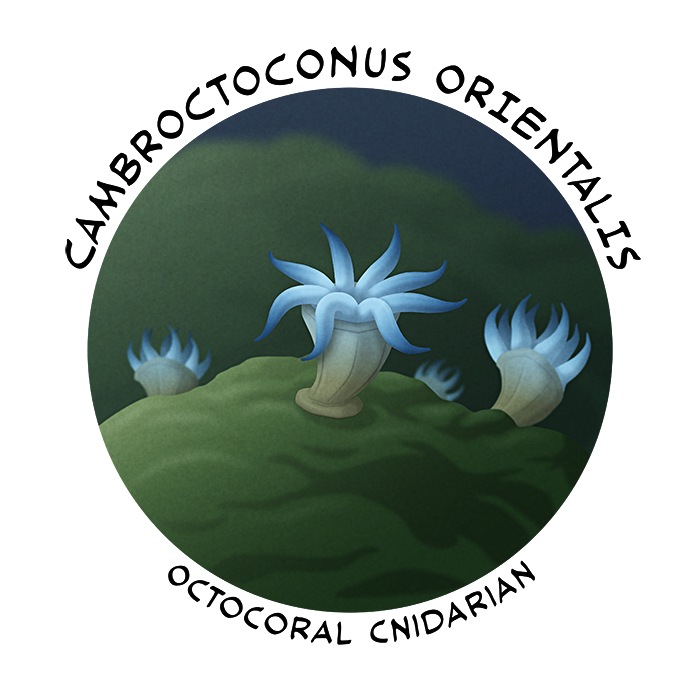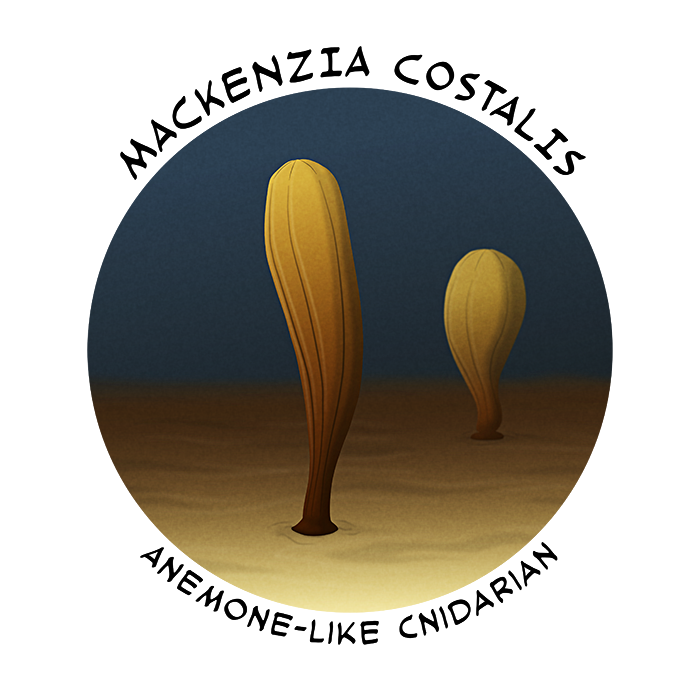Cnidarians are a diverse group that includes modern corals, sea anemones, sea pens, jellyfish, hydra, and even some parasitic forms. They’re the closest relatives of bilaterians in the animal evolutionary tree, and their ancestry goes back at least 560 million years into the Ediacaran Period, with the polyp-like Haootia being one of the earliest definite cnidarian fossils – and molecular clock estimates suggest the group might have actually originated much much earlier than that, possibly as much as 740 million years ago.
The anthozoan lineage of cnidarians (corals, anemones, and sea pens) spend their adult lives as polyps attached to the seafloor, either solitary or colonial, and since many lineages have hard calcium carbonate skeletons their fossil record is generally much better than that of the soft-bodied medusozoan jellyfish.
While corals are major contributors to reef ecosystems in modern times, back during the Cambrian they were actually rather rare. The weird little archaeocyathan sponges were the main reef-builders in the early-to-mid Cambrian, and after their decline reefs were mainly formed by algae and other types of sponges.
But, sometimes, growing among these reefs were also some tiny Cambrian corals.

Cambroctoconus orientalis is known from fossil reefs in Eastern China dating to about 505-500 million years ago. Around 1cm long (0.4″), it had a cup-shaped skeleton and preferentially grew in sheltered “crypts” – overhangs, gaps, and small caves in the reef framework.
It was originally thought to be a very early type of cnidarian, part of a coral-like stem lineage separate from true corals and other anthozoans, but discoveries of several other species of Cambroctoconus in Kyrgyzstan, South Korea, and Greenland have better preserved elements of its anatomy and allowed for a revised classification. Based on its eight-way symmetry and distinctive skeletal pores, it seems to have actually been an early octocoral.

The strange bag-like Mackenzia costalis from the Burgess Shale (~508 million years ago) was initially classified as a sea cucumber when it was first discovered in the early 1900s. Later, more fossils and studies in the late 1980s and early 1990s led to it being reinterpreted as a cnidarian, potentially an early member of the sea anemone lineage.
Up to 20cm tall (8″), it lived attached to hard surfaces on the seafloor standing upright with its mouth at the top. It had a large gut cavity, the surface of its body was folded into 8-10 vertical ridges, and it doesn’t seem to have had any tentacles. It probably fed on plankton or suspended organic particles, but it’s not clear how it actually did so – possibly it expanded and contracted to move water in and out of itself.
